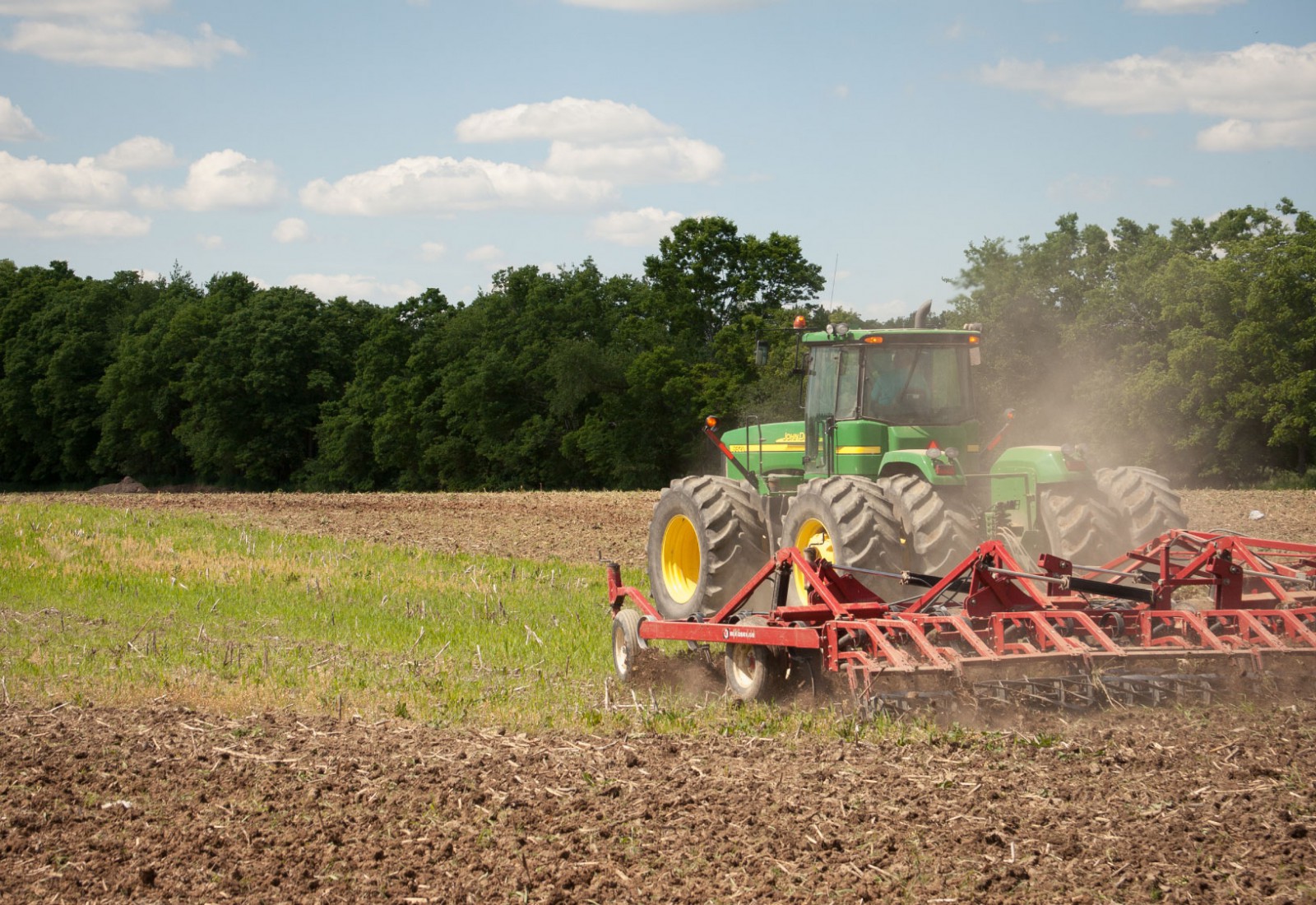Best Practices for Seeding Soybeans in Western Canada

By Shari Narine
Brent McCarthy will be doubling his soybean production this spring, planting just under 1,000 acres. That’s a big jump from the 80 acres he first seeded four years ago to the 450 acres he grew in 2016. But the reasons are simple: good commercial prices for soybeans and the ever-increasing challenge soil pathogens are presenting in continuing to grow peas and lentils.
Those are the same reasons Glenda Clezy, agronomy specialist with Saskatchewan Pulse Growers, has been hearing throughout the province. She adds that producers are also looking for an opportunity to include a nitrogen-fixing crop into their rotation.
“The majority of growers who had soybeans in last year were successful. There are newer varieties available that are earlier maturing and higher yielding, which is ideal for Saskatchewan growers,” says Clezy.
According to Statistics Canada, Saskatchewan farmers grew 235,000 acres of soybeans in 2016. With the potential of that amount doubling, there are factors new producers must keep in mind when seeding.
Seeding dates.
“Because of the length of our season, you want to get soybeans in as early as you can, yet minimize your risk to the germination of those seeds,” says Clezy.
May long weekend – which can be either sunny or produce the final dump of snow – is the benchmark McCarthy uses for seeding. Obviously snow means later seeding.
Soil temperature.
“You want to make sure ground temperature is warm enough,” says McCarthy.
To help the process along, in the fall, McCarthy uses a vertical till machine to prepare his fields. The procedure churns up the soil slightly, moves the trash below the surface and leaves black dirt on top, which tends to warm up the ground better. Producers who missed out doing this in the fall, can still do it a couple of days before seeding this spring.
McCarthy recommends that growers check the soil temperatures in the days leading up to seeding. “Some cool nights may cool down your soil. After you seed, you want a warm night or two in there just to keep that ground temp up.”
It is the moisture in the soil that is the concern. The seed needs to soak up the water and if the soil temperature drops severely in the night, the seed could go into shock.
The typical soil temperature should be around 10 degrees Celsius, says Clezy. Producers also need to take into account the risk of a cold spring rain or snow occurring shortly after seeding.
“The goal is to ensure that the moisture the soybeans are going to take up once they go into the soil is not going to be cold,” she says.
Seed depth.
McCarthy says he has had success in planting his seeds three-quarter to one inch deep, which puts it “nicely into moisture.”
Seeds should not be planted any deeper than one-and-a-half inches, says Clezy, or the plant experiences difficulty pushing through the ground to the surface.
Row spacing.
“Typically for Saskatchewan growers, seeding soybeans in narrower row spacings have been shown to be higher yielding than wider row spacing,” says Clezy.
McCarthy keeps his rows at 10-inch intervals. He uses a conventional air drill for his seeding. He says he has been told an air drill requires a higher seeding rate, but, he concedes, he also uses it for wheat and canola. It’s a cost saving measure that means he doesn’t have to buy specialized equipment – like a planter – to seed soybeans.
Planters, says Clezy, tend to be gentler on the seed and are precise, placing seeds evenly and allowing a lower seeding rate.
“Once we make the determination that this is a crop that’s going to stay and get big acres, well then maybe we’ll look at some specialized equipment. But for now we can use all our normal seeding equipment, all our conveyors that we’ve used for peas and lentils over the years, and everybody seems to have a pretty good flex-header for harvest time; it doesn’t take a big capital cost to get into growing beans,” said McCarthy.
Fungicide treated seed.
McCarthy says all his seed – and not just soybean – is fungicide treated “just to get as good a start as you can.”
Clezy holds that there is value to using fungicide treated seed, especially if seeding into cool, moist soils.
“For most growers to optimize your soybean yield, you want to get them in as early as you can, and you probably want to have some protection on that seed. Soybeans are susceptible to pathogens we have in our soil, so to protect them, a fungicidal seed treatment is going to be very beneficial,” she says.
McCarthy also suggests double inoculating.
“For seed treatment, there’s also a liquid inoculant applied with the seed and then we typically use a granular inoculant in addition to that,” he says.
This ensures there is adequate Rhizobium in the soil, which helps with fixing the nitrogen in the soil.
“We want to make sure we’re doing everything right to get the yield and we think the maturity factor is really reduced here,” says McCarthy.
For first-time growers, he says soybeans is a great crop. But he suggests seeding a small number of acres first “and see what you think. Wait to see if this crop is going to be right and then invest the money in a little bit of equipment.”


